Unterschiede und häufige Fragen zwischen 18650- und 14500-Batterien
Bei der Auswahl des richtigen Akkus für Ihr Projekt oder Gerät ist es wichtig, die Unterschiede und Gemeinsamkeiten gängiger Typen wie 18650 und 14500 zu kennen. In diesem Leitfaden erklären wir Ihnen diese Unterschiede und häufigen Fragen im Detail, damit Sie eine fundierte Entscheidung treffen können. Ob Sie eine Taschenlampe, eine Powerbank oder ein anderes Heimwerkerprojekt bauen – die Kenntnis dieser Spezifikationen kann Ihnen Zeit und Geld sparen.
- Die Grundlagen verstehen: Unterschiede und Gemeinsamkeiten zwischen 18650- und 14500-Batterien
- Unterschiede und gemeinsame elektrische Spezifikationen
- Unterschiede und häufige Anwendungsfälle erklärt
- Unterschiede und allgemeine Sicherheitsaspekte
- Unterschiede und häufige Fragen zur Kompatibilität
- Unterschiede und häufige Fragen zu Lebensdauer und Ladezyklen
- Unterschiede und gemeinsame Kostenüberlegungen
- Unterschiede und verbreitete Mythen über 18650- und 14500-Batterien
- Unterschiede und allgemeine erweiterte Themen für DIY-Akkupacks
- Unterschiede und Gemeinsamkeiten Umweltauswirkungen und Recycling
- Unterschiede und häufig gestellte Fragen
- Unterschiede und allgemeine Tipps zum Kauf von Originalbatterien
- Unterschiede und gemeinsame Best Practices für den täglichen Gebrauch
- Unterschiede und gemeinsame Zukunftstrends bei 18650- und 14500-Batterien
- Unterschiede und Gemeinsamkeiten Zusammenfassung und abschließende Gedanken
Die Grundlagen verstehen: Unterschiede und Gemeinsamkeiten zwischen 18650- und 14500-Batterien
Bevor wir uns mit fortgeschritteneren Themen befassen, beginnen wir mit den Unterschieden und gemeinsamen Grundlagen dieser beiden Batterietypen. Sowohl 18650- als auch 14500-Zellen sind zylindrische Lithium-Ionen-Batterien mit ähnlicher Chemie, aber sehr unterschiedlichen Größen und Kapazitäten.
Was bedeuten die Zahlen?
18650 : Der Name weist auf 18 mm Durchmesser und 65 mm Länge hin.
14500 : Der Name weist auf 14 mm Durchmesser und 50 mm Länge hin.
Dies ist der erste Unterschied und gemeinsame Aspekt: die physische Größe. 18650-Batterien sind deutlich größer, was sich in einer höheren Kapazität niederschlägt.
Typische Anwendungen
18650 : Laptops, Elektrowerkzeuge, E-Bikes, Taschenlampen mit hohem Stromverbrauch.
14500 : Kompakte Taschenlampen, kleine Elektronik, Hobbygeräte.
Ihre Unterschiede und gemeinsamen Verwendungszwecke hängen von den Geräteanforderungen ab.
Unterschiede und gemeinsame elektrische Spezifikationen
Einer der wichtigsten Aspekte sind die elektrischen Eigenschaften. Lassen Sie uns die Unterschiede und gemeinsamen Spezifikationen aufschlüsseln:
Stromspannung
Beide haben oft eine Nennspannung von etwa 3,6–3,7 V. Voll aufgeladen erreichen sie ~4,2 V.
Unterschiede : Trotz ähnlicher Nennspannung weisen 18650 Zellen aufgrund der höheren Kapazität oft eine bessere Spannungsstabilität unter Last auf.
Kapazität
18650 : Typischerweise 2000–3500 mAh (einige sogar über 4000 mAh).
14500 : Typischerweise 600–1000 mAh.
Dies ist ein wesentlicher Unterschied und gleichzeitig eine Gemeinsamkeit: Die Kapazitätslücke führt zu sehr unterschiedlichen Laufzeiten.
Entladungsraten
18650-Zellen können höhere kontinuierliche Entladeströme liefern und unterstützen so stromhungrige Geräte.
14500-Zellen haben einen geringeren Stromverbrauch und sind für einfache Elektronik geeignet.
Chemieoptionen
Beide Typen können Folgendes verwenden:
Li-Ionen (Standard)
LiFePO4 (sicherer, niedrigere Spannung)
Geschützte vs. ungeschützte Designs
Hier überschneiden sich Unterschiede und Gemeinsamkeiten : Sie verfügen über ähnliche Chemieoptionen, weisen jedoch in größenbegrenzten Anwendungsfällen eine unterschiedliche Leistung auf.
>>Siehe auch: So verwenden Sie einen 48-V-Lithiumbatterietester effektiv
Unterschiede und häufige Anwendungsfälle erklärt
Taschenlampen
18650 : Leistungsstarke taktische Taschenlampen, längere Laufzeit, hellere Leistung.
14500 : Schlanke EDC-Leuchten, leicht, kürzere Laufzeit.
Powerbanks
18650-Zellen dominieren aufgrund ihrer hohen Kapazität und Wiederaufladezyklenzahl.
Hobby und Heimwerken
14500-Zellen können in einigen Schaltkreisen AA ersetzen (beachten Sie die Spannungsunterschiede).
18650-Zellen für Akkupacks in Rollern, Fahrrädern, Werkzeugen.
Unterschiede und gemeinsame Designüberlegungen
Physischer Platz: Haben Sie Platz für 18650?
Benötigte Laufzeit: Reichen 14500?
Entladebedarf: Hoher Entladestrom oder nicht?
Kompromiss zwischen Kosten und Leistung.
Unterschiede und allgemeine Sicherheitsaspekte
Lithium-Ionen-Zellen erfordern eine sorgfältige Handhabung. Wir untersuchen Unterschiede und allgemeine Sicherheitstipps.
Schutzschaltungen
Viele 18650- und 14500-Zellen verfügen über integrierte Schutzplatinen, um Überladung, Überentladung oder Kurzschlüsse zu verhindern.
Ungeschützte Zellen sind riskanter, können aber in Packs mit einem BMS verwendet werden.
Laden
Verwenden Sie immer ein für den Zellentyp geeignetes Ladegerät.
14500-Zellen können mit AA-Batterien (1,5 V) verwechselt werden, haben aber eine Spannung von ca. 3,7 V, die Geräte zerstören kann, die nicht für sie ausgelegt sind.
Lagerung
Kühl und trocken lagern.
Vermeiden Sie physische Schäden, da Einstiche zu einem thermischen Durchgehen führen können.
Unterschiede und häufige Fragen zur Kompatibilität
Kann ich AA durch 14500 ersetzen?
Technisch gesehen nicht, es sei denn, das Gerät unterstützt einen 3,7-V-Eingang.
Überprüfen Sie immer die Spannungsanforderungen des Geräts.
Sind 18650 und 14500 austauschbar?
Nein. Der Größenunterschied macht sie physisch inkompatibel.
Auch die elektrische Kapazität ist sehr unterschiedlich.
Kann ich dasselbe Ladegerät verwenden?
Nur wenn das Ladegerät die richtige Größe und Chemie unterstützt.
Viele intelligente Ladegeräte haben Steckplätze für beides, überprüfen Sie jedoch immer die Spezifikationen.
Unterschiede und häufige Fragen zu Lebensdauer und Ladezyklen
Typische Ladezyklen
18650: 300–1000 Zyklen, je nach Qualität.
14500: 300–500 Zyklen typischerweise.
Haltbarkeit
Beide bauen sich im Laufe der Jahre langsam ab.
Zur Langzeitlagerung teilweise geladen (ca. 40–60 %) lagern.
Unterschiede und allgemeine Wartungstipps
Vermeiden Sie eine Tiefentladung.
Verwenden Sie passende Zellen in Mehrzellenpacks.
Überwachen Sie die Temperatur während des Ladevorgangs.
Unterschiede und gemeinsame Kostenüberlegungen
Preis pro Zelle
18650: 2–10 $ oder mehr, je nach Marke und Schutz.
14500: Normalerweise 1–5 $.
Kosten vs. gelieferte Energie
18650 bietet im Allgemeinen mehr Energie pro Dollar.
14500 ist ideal, wenn der Platz begrenzt ist.
Unterschiede und gemeinsame Markenempfehlungen
Vertrauenswürdige Marken: Panasonic, Samsung, LG für 18650.
Für 14500: Vapcell, Keeppower, Nitecore.
Vermeiden Sie ultrabillige Zellen mit übertriebenen Nennwerten.
Unterschiede und verbreitete Mythen über 18650- und 14500-Batterien
Mythos 1: Alle 18650-Batterien sind gleich
Wirklichkeit:
Große Unterschiede bei Kapazität, Entladerate und Chemie.
Vermeiden Sie No-Name-Marken mit unrealistischen Spezifikationen.
Mythos 2: 14500 kann AA immer ersetzen
Wirklichkeit:
AA = 1,5 V (Alkaline), 14500 = 3,7 V.
Ohne vorgesehene Unterstützung nicht kompatibel.
Mythos 3: Geschützte Zellen sind immer besser
Wirklichkeit:
Sicherere, aber ungeschützte Zellen sind in Packs mit BMS sinnvoll.
Bringen Sie Sicherheit und Anwendungsanforderungen in Einklang.
Unterschiede und allgemeine erweiterte Themen für DIY-Akkupacks
Bauen Sie Ihr eigenes Batteriepaket
Punktschweißen vs. Löten
Verwendung eines geeigneten BMS
Ausbalancieren der Zellen vor der Montage
Parallel- und Reihenschaltungen
Spannungserhöhungen in Reihe
Parallele Kapazitätssteigerungen
Sicherheitsimplikationen
Überwachung und Tests
Zellspannungsprüfungen
Innenwiderstandsmessungen
Verfolgung der Zykluslebensdauer
Unterschiede und Gemeinsamkeiten Umweltauswirkungen und Recycling
Bedeutung des Recyclings
Sowohl 18650 als auch 14500 verwenden wertvolle Materialien.
Vermeiden Sie die Entsorgung auf Mülldeponien.
Recyclinganlagen
Viele lokale Zentren akzeptieren Lithium-Ionen.
Es gibt spezielle Mail-In-Programme.
Nachhaltige Praktiken
Kaufen Sie Qualitätszellen mit längerer Lebensdauer.
Vermeiden Sie gefälschte Batterien minderer Qualität, die frühzeitig ausfallen.
Unterschiede und häufig gestellte Fragen
Welche Batterie ist besser?
Hängt von der Verwendung ab: 18650 für Kapazität und Leistung, 14500 für kompakte Größe.
Kann ich Marken mischen?
Nicht in Packungen empfohlen – Zellen sollten übereinstimmen.
Woher weiß ich, ob mein Ladegerät kompatibel ist?
Überprüfen Sie Spannung, Stromgrenzen und unterstützte Zellgrößen.
Wie lagere ich Batterien langfristig?
Teilladung (40–60 %)
Kühle, trockene Umgebung
Von brennbaren Materialien fernhalten
>>Siehe auch: So erkennen Sie, wann Sie die Batterie Ihres Hoverboards austauschen müssen
Unterschiede und allgemeine Tipps zum Kauf von Originalbatterien
Kaufen Sie bei seriösen Händlern.
Achten Sie auf Herstellermarkierungen.
Hüten Sie sich vor Zellen, die unrealistische Kapazitäten versprechen.
Vor der ersten Verwendung auf physische Mängel prüfen.
Unterschiede und gemeinsame Best Practices für den täglichen Gebrauch
Laden
Verwenden Sie das passende Ladegerät für den Zellentyp.
Lassen Sie den Ladevorgang nicht über längere Zeit unbeaufsichtigt.
Transport
Tragen Sie die Batterie in einem Batteriefach, um Kurzschlüsse zu vermeiden.
Werfen Sie keine losen Zellen zusammen mit Schlüsseln oder Münzen in Taschen.
Entsorgung
Nutzen Sie zertifizierte Recyclingstellen.
Nicht verbrennen oder zerdrücken.
Unterschiede und gemeinsame Zukunftstrends bei 18650- und 14500-Batterien
Höhere Energiedichte
Inkrementelle Verbesserungen der Kapazität ohne Größenzunahme.
Sicherere Chemikalien
LiFePO4 gewinnt für sicherere Anwendungen an Bedeutung.
Sich entwickelnde Standards
Unterstützung für intelligentes Laden über USB-C.
Integrierter Schutz und Ausgleich.
Unterschiede und Gemeinsamkeiten Zusammenfassung und abschließende Gedanken
Die Unterschiede und Gemeinsamkeiten von 18650- und 14500-Batterien zeigen, dass sie zwar viele chemische Gemeinsamkeiten aufweisen, aber für sehr unterschiedliche Anwendungsfälle konzipiert sind. 18650-Batterien bieten höhere Kapazität, längere Laufzeiten und bessere Leistung für Anwendungen mit hohem Stromverbrauch. 14500-Batterien hingegen eignen sich hervorragend für Anwendungen, bei denen Platz und Gewicht eine wichtige Rolle spielen, wie beispielsweise bei schlanken Taschenlampen oder kompakten elektronischen Geräten.
Wenn Sie diese Unterschiede und Gemeinsamkeiten kennen, können Sie eine kluge Wahl treffen, Sicherheitsrisiken vermeiden und den größtmöglichen Nutzen aus Ihrem Kauf ziehen. Achten Sie stets auf Qualität, verwenden Sie das richtige Ladegerät und entsorgen Sie alte Akkus verantwortungsvoll.

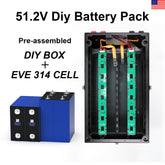

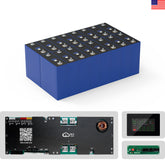

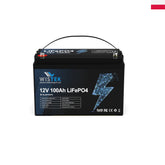
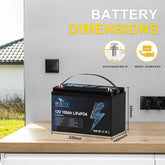
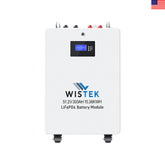
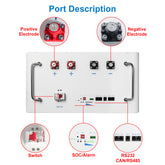
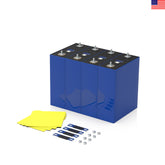
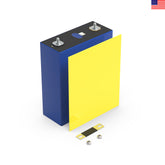
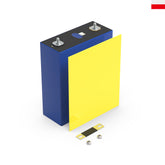

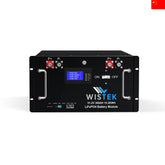
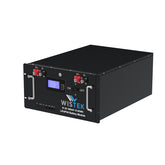
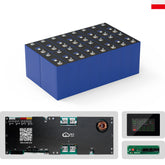








Leave a comment
All blog comments are checked prior to publishing